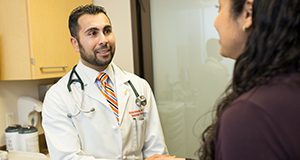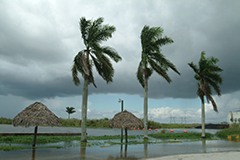For the person with breast cancer, a diagnosis causes her life to suddenly and dramatically change. As treatment progresses, the patient has a multitude of doctor visits, procedures, and often support groups to keep her busy and focused. Her partner's challenges are also significant, but unfortunately they are frequently overlooked. This 4-page fact sheet is the second document in a 12-part series on breast cancer. It provides perspectives and suggestions for persons who are accompanying a woman through breast cancer treatment. Written by Martha C. Monroe, Barbara F. Shea, and Linda B. Bobroff, and published by the UF/IFAS Department of Family, Youth and Community Sciences, revised April 2018.
http://edis.ifas.ufl.edu/fy896
Tag: Martha C. Monroe
Risk Perception and Needs: Defining Extension's Climate Change Adaptation Role
Third in a series on climate change communication for Extension professionals, this 7-page fact sheet written by Mark Megalos, Martha C. Monroe, and Claire Needham Bode and published in April 2017 by the UF School of Forest Resources and Conservation provides strategies for overcoming challenges in communicating about climate change.
http://edis.ifas.ufl.edu/fr403
Strategies for Communicating Climate Change to Extension Audiences
Second in a series on climate change communication for Extension professionals, this 5-page fact sheet written by Claire Needham Bode, Martha C. Monroe, and Mark Megalos and published in January 2017 by the UF School of Forest Resources and Conservation provides strategies for overcoming challenges in communicating about climate change.
http://edis.ifas.ufl.edu/fr402
Why is Exposure to Nature Important in Early Childhood?
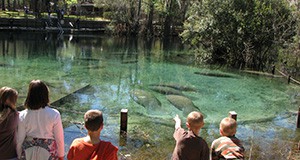
Early childhood is a crucial period for the physical and cognitive development of children. Most people who care for young children realize that children benefit from playing outside, but caretakers might not have ready access to the literature that supports their observations. This 4-page fact sheet written by Kristen Poppell and Martha C. Monroe and published by the School of Forest Resources and Conservation reviews some of the literature that shows that young children need to go outside and be around nature regularly. It describes some of the benefits children (and adults!) gain from learning and playing outdoors and includes suggestions for several resources for parents, teachers, and caretakers who hope to increase these opportunities for their youngsters.
edis.ifas.ufl.edu/fr394
Breast Cancer: Preparing for Surgery
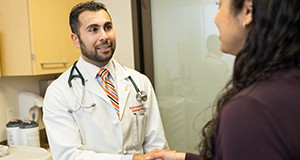 Once you and your doctor schedule your breast cancer surgery, you may have additional questions about how you can prepare for your operation. This 5-page fact sheet provides information to help you get ready for breast cancer surgery through a brief overview of common surgical options, medical appointments, social support systems, and standard surgical procedures as well as reactions and memories of women who have gone through this experience. Written by Martha C. Monroe and Barbara F. Shea, and published by the UF Department of Family, Youth and Community Sciences. Revised February 2016.
Once you and your doctor schedule your breast cancer surgery, you may have additional questions about how you can prepare for your operation. This 5-page fact sheet provides information to help you get ready for breast cancer surgery through a brief overview of common surgical options, medical appointments, social support systems, and standard surgical procedures as well as reactions and memories of women who have gone through this experience. Written by Martha C. Monroe and Barbara F. Shea, and published by the UF Department of Family, Youth and Community Sciences. Revised February 2016.
http://edis.ifas.ufl.edu/fy899
Some Challenges behind Communicating about Climate Change
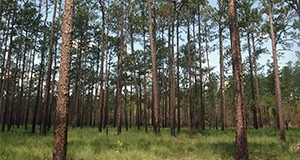 Media coverage of climate change can often leave the average person confused and unsure what to believe. However, as a trusted source of information and research, Extension has the opportunity to educate people about climate change and appropriate adaptation strategies in a scientific, unbiased way. This 5-page fact sheet outlines four challenges of climate change education. Written by Martha Monroe, Claire Layman Bode, and Mark A. Megalos, and published by the UF School of Forest Resources and Conservation, May 2015.
Media coverage of climate change can often leave the average person confused and unsure what to believe. However, as a trusted source of information and research, Extension has the opportunity to educate people about climate change and appropriate adaptation strategies in a scientific, unbiased way. This 5-page fact sheet outlines four challenges of climate change education. Written by Martha Monroe, Claire Layman Bode, and Mark A. Megalos, and published by the UF School of Forest Resources and Conservation, May 2015.
http://edis.ifas.ufl.edu/fr392
Breast Cancer: Neoadjuvant Chemotherapy
 Neoadjuvant, or preoperative, chemotherapy is the use of chemotherapy to treat breast cancer before surgery. If your doctors have suggested that you consider this treatment, you probably have questions about it. This 4-page fact sheet provides an overview of chemotherapy treatment, potential side effects, and major benefits. Written by Barbara F. Shea and Martha C. Monroe, and published by the UF Department of Family Youth and Community Sciences, April 2015. (Photo: iStock/Thinkstock.com)
Neoadjuvant, or preoperative, chemotherapy is the use of chemotherapy to treat breast cancer before surgery. If your doctors have suggested that you consider this treatment, you probably have questions about it. This 4-page fact sheet provides an overview of chemotherapy treatment, potential side effects, and major benefits. Written by Barbara F. Shea and Martha C. Monroe, and published by the UF Department of Family Youth and Community Sciences, April 2015. (Photo: iStock/Thinkstock.com)
http://edis.ifas.ufl.edu/fy897
Cooperative Learning for 4-H
 A simple way to facilitate discovery through cooperative learning, in which learners work together to meet a shared goal with a leader guiding them to encourage group interactions. This 5-page fact sheet provides teaching techniques and applies cooperative learning to natural resources and environmental literacy in the context of 4-H. Written by Jessica McIntosh and Martha Monroe, and published by the UF Department of School of Forest Resources and Conservation, September 2014.
A simple way to facilitate discovery through cooperative learning, in which learners work together to meet a shared goal with a leader guiding them to encourage group interactions. This 5-page fact sheet provides teaching techniques and applies cooperative learning to natural resources and environmental literacy in the context of 4-H. Written by Jessica McIntosh and Martha Monroe, and published by the UF Department of School of Forest Resources and Conservation, September 2014.
http://edis.ifas.ufl.edu/fr390
Breast Cancer: Making Sense of the Numbers
 A breast cancer diagnosis is always a challenge to the patient and her family.* People react in different ways to a breast cancer diagnosis. Some breast cancer patients want to take an active role in understanding and choosing their treatment, and others prefer to leave decisions to their health care providers. This 5-page fact sheet, first in a 12-part series on breast cancer, provides information that will help persons who want to understand and be actively involved in treatment decisions. Was written by Martha C. Monroe, Barbara F. Shea, and Linda Bobroff, and published by the UF Department of Family Youth and Community Sciences, December 2014. (Photo: iStock/Thinkstock)
A breast cancer diagnosis is always a challenge to the patient and her family.* People react in different ways to a breast cancer diagnosis. Some breast cancer patients want to take an active role in understanding and choosing their treatment, and others prefer to leave decisions to their health care providers. This 5-page fact sheet, first in a 12-part series on breast cancer, provides information that will help persons who want to understand and be actively involved in treatment decisions. Was written by Martha C. Monroe, Barbara F. Shea, and Linda Bobroff, and published by the UF Department of Family Youth and Community Sciences, December 2014. (Photo: iStock/Thinkstock)
http://edis.ifas.ufl.edu/fy895
Improving Behavioral Outcomes in Extension Using the Tools of Community-Based Social Marketing (CBSM)
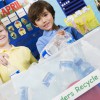 There is increasing evidence that, with the right approach, people can be encouraged to change. From recycling, composting, and picking up pet waste to saving water, the public is adopting new behaviors and giving up old ones. The tools to do this can be found in Community Based Social Marketing (CBSM). This 6-page fact sheet was written by Paul Monaghan and Martha Monroe, and published by the UF Department of Agricultural Education and Communication, September 2013.
There is increasing evidence that, with the right approach, people can be encouraged to change. From recycling, composting, and picking up pet waste to saving water, the public is adopting new behaviors and giving up old ones. The tools to do this can be found in Community Based Social Marketing (CBSM). This 6-page fact sheet was written by Paul Monaghan and Martha Monroe, and published by the UF Department of Agricultural Education and Communication, September 2013.
http://edis.ifas.ufl.edu/wc149
Wildland-Urban Interface: Key Issues (FOR202/FR264)
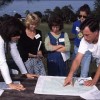 A result of the influx of new residents to the South is an expansion of urban areas into forests and other natural areas, creating areas referred to as the wildland-urban interface. Interface issues of most concern vary from state to state, but some key issues are consistent across the South. the US Forest Service conducted a series of focus groups in 2000. Key issues gleaned from those focus groups and other related sources are described in this 5-page fact sheet written by L. Annie Hermansen-Baez, Jennifer Seitz, and Martha C. Monroe, and published by the UF Department of School of Forest Resources and Conservation, February 2013.
A result of the influx of new residents to the South is an expansion of urban areas into forests and other natural areas, creating areas referred to as the wildland-urban interface. Interface issues of most concern vary from state to state, but some key issues are consistent across the South. the US Forest Service conducted a series of focus groups in 2000. Key issues gleaned from those focus groups and other related sources are described in this 5-page fact sheet written by L. Annie Hermansen-Baez, Jennifer Seitz, and Martha C. Monroe, and published by the UF Department of School of Forest Resources and Conservation, February 2013.
http://edis.ifas.ufl.edu/fr264
Environmental Education Resources from Federal and State Agencies (FOR100/FR128)
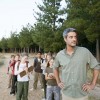 Going on a field trip? Want a spiffy new poster? Looking for a guest speaker? Or do you just need to know more about wildland fire, endangered species, coastal management, or invasive exotics? Many agencies are available to provide information, share resources, support field trips, and contribute to your environmental education programming. This 8-page fact sheet explores federal and state agencies in Florida with major educational resources. Written by Martha C. Monroe and Alison W. Bowers, and published by the UF Department of School of Forest Resources and Conservation, December 2012.
Going on a field trip? Want a spiffy new poster? Looking for a guest speaker? Or do you just need to know more about wildland fire, endangered species, coastal management, or invasive exotics? Many agencies are available to provide information, share resources, support field trips, and contribute to your environmental education programming. This 8-page fact sheet explores federal and state agencies in Florida with major educational resources. Written by Martha C. Monroe and Alison W. Bowers, and published by the UF Department of School of Forest Resources and Conservation, December 2012.
http://edis.ifas.ufl.edu/fr128
Developing Land in Florida with Fire in Mind: Recommendations for Designers, Developers, and Decision Makers (FOR63/FR059)
 In 1998, fire destroyed or damaged 330 homes and businesses in Florida. Losses totaled more than $800 million. In some places, homes were saved by fire-fighting crews, or where the right decisions were made by builders or designers. With advance planning, architects and developers can do a great deal to reduce wildfire risk for those living and working in Florida. This 5-page fact sheet was written by Martha C. Monroe and Susan Marynowski, and published by the UF Department of School of Forest Resources and Conservation, September 2012.
In 1998, fire destroyed or damaged 330 homes and businesses in Florida. Losses totaled more than $800 million. In some places, homes were saved by fire-fighting crews, or where the right decisions were made by builders or designers. With advance planning, architects and developers can do a great deal to reduce wildfire risk for those living and working in Florida. This 5-page fact sheet was written by Martha C. Monroe and Susan Marynowski, and published by the UF Department of School of Forest Resources and Conservation, September 2012.
http://edis.ifas.ufl.edu/fr059
Forest Management in the Interface: Reducing Fire Risk (FOR179/FR249)
 Wildfire is one of the most serious and publicized challenges facing interface forest management. Wildfires can change forest vegetation, affect human health, and cause millions of dollars’ worth of damage to homes, businesses, timber, and tourism. This 5-page fact sheet outlines tips for the firewise community development, design of structures, landscaping and fuel reduction. Written by Bruce Hull, Sarah F. Ashton, Rien M. Visser, and Martha C. Monroe, and published by the UF Department of School of Forest Resources and Conservation, August 2012.
Wildfire is one of the most serious and publicized challenges facing interface forest management. Wildfires can change forest vegetation, affect human health, and cause millions of dollars’ worth of damage to homes, businesses, timber, and tourism. This 5-page fact sheet outlines tips for the firewise community development, design of structures, landscaping and fuel reduction. Written by Bruce Hull, Sarah F. Ashton, Rien M. Visser, and Martha C. Monroe, and published by the UF Department of School of Forest Resources and Conservation, August 2012.
http://edis.ifas.ufl.edu/fr249
Landscaping in Florida with Fire in Mind (FOR71/FR076)
 Fire is a powerful part of Florida’s landscape. It can maintain healthy natural ecosystems (Figure 1), but can also turn a home to ashes. Florida’s frequent lightning strikes and human carelessness guarantee that wildfire will continue to be a factor in both rural and suburban areas. Some homeowners may wonder if they are in danger of wildfire. Find out if you are at risk, and follow these guidelines to reduce the threat of wildfire. This 4-page fact sheet was written by Martha Monroe, Alan Long, and published by the UF Department of School of Forest Resources and Conservation, September 2012.
Fire is a powerful part of Florida’s landscape. It can maintain healthy natural ecosystems (Figure 1), but can also turn a home to ashes. Florida’s frequent lightning strikes and human carelessness guarantee that wildfire will continue to be a factor in both rural and suburban areas. Some homeowners may wonder if they are in danger of wildfire. Find out if you are at risk, and follow these guidelines to reduce the threat of wildfire. This 4-page fact sheet was written by Martha Monroe, Alan Long, and published by the UF Department of School of Forest Resources and Conservation, September 2012.
http://edis.ifas.ufl.edu/fr076
Lessons Learned from Evaluations of Citizen Science Programs (FOR291/FR359)
 Extension agents with an interest in increasing the scientific and environmental awareness of their constituents may find an answer through a form of participatory scientific research known as citizen science. Citizen science uses volunteers of all ages, professions, backgrounds, and skills — often across broad geographic areas — to engage non-scientists in a variety of tasks, but most commonly data collection. This 5-page fact sheet informs potential citizen science practitioners of recent evaluations of citizen science programs. Looking closely at identifying appropriate tasks for volunteers, assessing data validity, and evaluating changes in volunteers’ knowledge and attitudes can help organizers avoid common pitfalls and develop citizen science programs most likely to succeed. Written by Luke Gommerman and Martha C. Monroe, and published by the UF Department of School of Forest Resources and Conservation, May 2012.
Extension agents with an interest in increasing the scientific and environmental awareness of their constituents may find an answer through a form of participatory scientific research known as citizen science. Citizen science uses volunteers of all ages, professions, backgrounds, and skills — often across broad geographic areas — to engage non-scientists in a variety of tasks, but most commonly data collection. This 5-page fact sheet informs potential citizen science practitioners of recent evaluations of citizen science programs. Looking closely at identifying appropriate tasks for volunteers, assessing data validity, and evaluating changes in volunteers’ knowledge and attitudes can help organizers avoid common pitfalls and develop citizen science programs most likely to succeed. Written by Luke Gommerman and Martha C. Monroe, and published by the UF Department of School of Forest Resources and Conservation, May 2012.
http://edis.ifas.ufl.edu/fr359
Beyond the Trees: A Systems Approach to Understanding Forest Health in the Southeastern United States (FOR287/FR355)
 Forest health is an important topic for biology, agriculture, current issues, and environmental science classes. But conversations with educators suggested that they were not equipped to teach about it given their existing curricula. This 79-page educator guide includes six activities designed to help learners consider forest health from various viewpoints; understand interrelationships and feedback mechanisms in a forest system; visualize spatial and temporal mechanisms of forest system functions; appreciate the variety of threats to forest health; and consider their role as future forest stewards. Written by Geetha S. Iyer, Martha M. Monroe and Jason A. Smith, and published by the UF Department of School of Forest Resources and Conservation, July 2011.
Forest health is an important topic for biology, agriculture, current issues, and environmental science classes. But conversations with educators suggested that they were not equipped to teach about it given their existing curricula. This 79-page educator guide includes six activities designed to help learners consider forest health from various viewpoints; understand interrelationships and feedback mechanisms in a forest system; visualize spatial and temporal mechanisms of forest system functions; appreciate the variety of threats to forest health; and consider their role as future forest stewards. Written by Geetha S. Iyer, Martha M. Monroe and Jason A. Smith, and published by the UF Department of School of Forest Resources and Conservation, July 2011.
http://edis.ifas.ufl.edu/fr355
What Is a Healthy Forest? A Supplement to Florida Project Learning Tree (FOR286/FR354)
 There is no question that forests provide important ecological services and economic resources to Floridians. Similarly, there is no doubt that the health of our forests is at the mercy of how we manage our landscape and make decisions.The activities in this supplement, with the original PLT Guide, help our students rise to these twin challenges.This 84-page handbook was written by Sarah L. Hicks, Martha C. Monroe, Geetha S. Iyer, and Jason A. Smith, and published by the UF Department of School of Forest Resources and Conservation, July 2011.
There is no question that forests provide important ecological services and economic resources to Floridians. Similarly, there is no doubt that the health of our forests is at the mercy of how we manage our landscape and make decisions.The activities in this supplement, with the original PLT Guide, help our students rise to these twin challenges.This 84-page handbook was written by Sarah L. Hicks, Martha C. Monroe, Geetha S. Iyer, and Jason A. Smith, and published by the UF Department of School of Forest Resources and Conservation, July 2011.
http://edis.ifas.ufl.edu/fr354
Breast Cancer: Coping with Hair Loss (FCS8833/FY903)
 There are so many things to pay attention to when faced with cancer and chemotherapy that many women may not take the time to look at the bright side of losing their hair. In an attempt to help ease this transition and make light of this inevitable change, this fact sheet has a list of advantages of not having hair. Perhaps you’ll be able to add to this list. Written by Martha Monroe and Barbara Shea, and published by the UF Department of Family Youth and Community Sciences, January 2012.
There are so many things to pay attention to when faced with cancer and chemotherapy that many women may not take the time to look at the bright side of losing their hair. In an attempt to help ease this transition and make light of this inevitable change, this fact sheet has a list of advantages of not having hair. Perhaps you’ll be able to add to this list. Written by Martha Monroe and Barbara Shea, and published by the UF Department of Family Youth and Community Sciences, January 2012.
http://edis.ifas.ufl.edu/fy903
Breast Cancer Series: Hormone Therapy (FCS8836/FY906)
Women who are at high risk of getting breast cancer and women who have had breast cancer may be prescribed daily oral medications to block the estrogen receptor site or decrease the production of estrogen. This 2-page fact sheet describes various hormone therapy options. It is part of a 12-part Breast Cancer series. Written by Karen C. Daily and Martha C. Monroe, and published by the UF Department of Family Youth and Community Sciences, June 2011.
http://edis.ifas.ufl.edu/fy906
